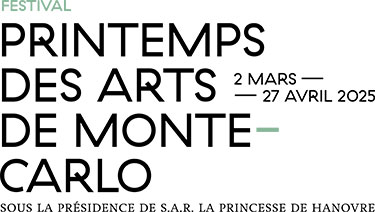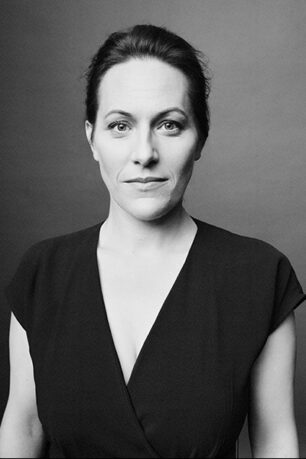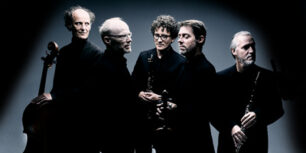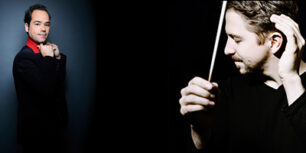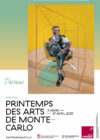Gustav Mahler was born in the age of photography. From the first portraits of the child from Iglau (today’s Jihlava, Czech Republic) to the last shots taken on the liner that brought the ailing composer back to Europe, where death awaited him, Mahler’s entire life unfolds before our eyes. A portrait of the hurried young man taken around 1881, a few years after his graduation from the Vienna Conservatory, reflects a period from which only the single movement of his Quartet for Piano, Violin, Viola and Cello in A Minor (circa 1876) survives. But the official photos, with their assumed poses and conventional smiles, are not those that draw our closest attention. We are much more touched by those taken in the privacy of the family. Among them, there is one which comes to my mind every time I hear Das Lied von der Erde, especially in Reinbert de Leeuw’s chamber version. It is a photograph taken in the summer of 1905 at Maiernigg, the estate on the banks of the Wörthersee where Mahler found fulfillment for several seasons. Facing the camera, he poses with his two daughters: the elder Maria, known as Putzi, a little girl with jet-black hair, and the younger, blond Anna, nicknamed Gucki, who seemed bound to become the image of their mother, Alma. Wearing flowing white dresses, the two children held in their father’s reassuring arms look at once intimidated and mischievous. Mahler’s face, framed by these two youthful faces, appears surprisingly serene. Behind his famous rimmed glasses, we can make out his peaceful gaze underlined by an uncontrived smiles – a beautiful moment of pure tenderness.
But happiness is fleeting: two years later, Putzi died of scarlet fever. On that fateful 11 July 1907, death snatched from Mahler the child who most resembled him: “She was very much his daughter,” said Alma. “She was not allowed to live long, but that’s how it had to be, she had to be his joy for a few years, and that in itself has the value of eternity.” The ordeal of this cruel bereavement was compounded for Mahler by the diagnosis of a heart defect, which deprived him of his great summer pleasures: mountain running and swimming in Alpine lakes. Henceforth, Mahler would only be able to find “the way back to himself” through inner work.
In June 1908, in the mountain village of Toblach (South Tyrol), he took refuge in the solitude of his Häuschen, a small hut built in the middle of nature, in an effort to overcome his anxiety and rediscover the inspiration that had deserted him after his tragic loss. An avid reader, Mahler found a reflection of his state of mind in a small book, Die Chinesische Flöte (The Chinese Flute), a gift from his friend Theobald Pollak. This small anthology compiled by Hans Bethge brings together Chinese poems from the 7th and 8th centuries, drawn from various existing collections in French and German, and bears witness to the long-standing vogue for Orientalism throughout Europe in last decades of the 19th century. Oriental poetry finds particular resonance with the composer’s melancholy state, fluctuating between weariness of existence and yearning for eternal rest: “Dark is life, dark is death!” repeats the first lied, while the last on states: “Everywhere, the horizon will be blue, eternally, eternally.”
In 1920, Arnold Schönberg was the first to perform a version of Das Lied von der Erde for tenor, baritone and thirteen instrumentalists, for Vienna’s Society for Private Musical Performances, thus reaffirming his admiration for Mahler. Reinbert de Leeuw proposed in turn his own vision of Song of the Earth based on Schönberg’s instrumentation, while retaining certain instruments that he considers essential to the work’s identity – the gloomy-sounding contrabassoon at the start of Abschied, for example, or the harp, which so aptly expresses the sense of eternity. Here, the loss of orchestral power is compensated by a subtle balance between instruments and solo voices, tightening the intimate connection between word and music, and engaging the listener’s fully focused attention.
I have fond memories of the first performance of this version of Das Lied in France by the Het Collectief, with Lucile Richardot and Yves Saelens as soloists conducted by Reinbert de Leeuw, at the 2019 Festival de Saintes. The same artists performed the work again at the Festival de Royaumont the following year. Reinbert de Leeuw had passed away a few months earlier, but he had had the strength to complete the recording of the work, whose message he seemed to have fully integrated. The young Gregor Mayrhofer replaced him as conductor in a perfect transmission. Surrounded by the musicians of Het Collectief and the fully committed soloists, he succeeded in conveying all the intensity of this score. Rather than a song of farewell, Das Lied von der Erde carries a song of eternal renewal reflecting Putzi’s gaze.
Thomas Verne
